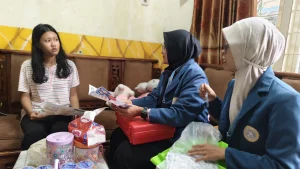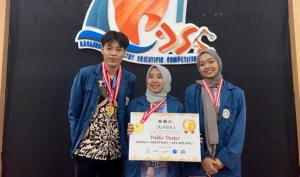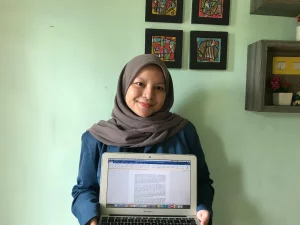UNAIR NEWS – Stem cell technology is developing well in Indonesia. Just recently, a team of doctors from Department of Dermatology and Venereology, Faculty of Medicine Universitas Airlangga RSUD Dr. Soetomo in collaboration with Institute of Tropical Disease (ITD) UNAIR Surabaya is developing a skin rejuvenation product from amniotic membrane stem cell.
In the last few months, the team has conducted some product trial tests for their topical product the team has been working on.
In the development team, there were DR. Dr. Cita Rosita Sigit Prakoeswa. Sp.KK(K), FINS-DV, FAA-DV, dr. Dwi Murtiastutik, Sp.KK(K), FINS-DV, dr. Evy Ervianti, Sp.KK(K), FAA-DV, dr. Diah Mira, Sp.KK, dr. Irmadita Citrashanty, Sp.KK, dr. Febrina Dewi Pratiwi, dr. Zada Febrial, and dr. Dewi Nurasrifah. The team also collaborates with Prof. Dr. Fedik Abdul Rantam, drh. of ITD UNAIR and the research is conducted with FK UNAIR’s research fund.
To UNAIR NEWS, Cita explained that at the moment metabolic product stem cell is being developed for skin rejuvenation from amnion. This serum is being developed to handle two cases. First, to rejuvenate skin which experiences premature skin aging. Second, to heal chronic wound of leprosy patients.
“This chronic wound and premature skin aging are similar. There is growth hormone dysregulation, or growth factor or hormone lacking in both of them. This topical product is expected to give fast skin rejuvenation effect,” she said.
Topical rejuvenation product being currently developed is made of metabolic product stemcell from amnion. Amnion is a part of the placenta. The amnion used is the unused and the patient has consented for that. Through characterization process, amnion to be used is tested and ensured for safety, then the amnion is taken as metabolite product stem cells.
“From the analysis conducted in a pharmaceutical laboratory, they found that metabolic product stem cell from amniotic membrane is better than Platelet Rich Plasma or metabolic product stemcell from Peripheral Blood Mononuclear Cells, Umbilical cord, and fat tissue,” said Cita.
From that fact, Cita and team decided to choose amnion. The team then collaborated with Department of Obstetrics and Gynecology Faculty of Medicine UNAIR -RSUD Dr. Soetomo.
At the moment, premature skin aging is found more often. There are more people look older than their real ages.
“We can differentiate between normal aging and premature aging. For example, someone aged 50 but they look like a 70-year-old, it is a premature skin aging,” she said.
Premature skin aging happens due to many reasons. Lifestyle and stress management really affect the process of premature aging. Furthermore, excessive ultra violet without sun block protection also triggers premature skin aging.
“Unfortunately, the usage of sunblock or sunscreen has not been a custom in the community. An education on the importance of sunblock is needed to prevent the bad effect of UV light,” she said.
For the best result, Cita even combines metabolic product stemcell with micro needling technique, which is a technique or skin rejuvenation using tiny sized needles. The needles then applied on the face and then metabolic product stemcell is applied on the face.
“We have compared the usage of therapy using metabolic product stemcell and micro needling, with a group of patients which only used micro needling without metabolic product stemcell application. Twenty patients treated with metabolic product stemcell and micro needling showed more satisfactory result. The parameter of improvement used Janus Methods which are tone, wrinkle, pigment and skin texture,” Cita stated.
Basically, the micro needling technique already rejuvenates the skin. Because this ‘rubbing’ technique makes our skin fresher. Combined with metabolic product stem cell, the skin rejuvenation is accelerated. So, the result is even better, especially to in rejuvenating the skin.
This rejuvenation serum, besides being useful for esthetic reasons, it is also useful for treating chronic wound on leprosy patients.
“Leprosy patients often have chronic wound on their soles. The wound is difficult to heal. It may heal for a while, but then it appears again. It is a problem for us,” she said.
After the research, Cita and team have tried to prove the efficacy of the metabolic product stemcell. From the samples used, Cita compared the wound administered with metabolic product stemcell with the wound with standard therapy for three months.
“The group with metabolic product stemcell treatment does not show recurring wound, while the group with standard treatment have the wound again,” she said.
So far, metabolic product stemcell treatment is proven to be more effective accelerating the healing the chronic wound and preventing the wound to happen again. (*)
Author : Sefya Hayu
Editor : Binti Q. Masruroh








